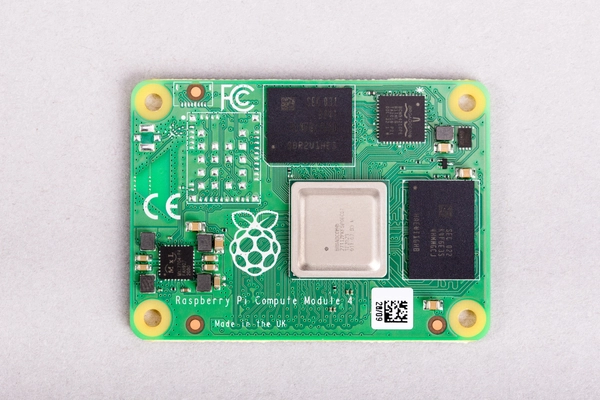Rust for Python Developers: Why You Should Take a Look at the Rust Programming Language
Discover how Rust complements Python with speed, safety, and control — and why it's worth your attention as a modern developer. The post Rust for Python Developers: Why You Should Take a Look at the Rust Programming Language appeared first on Towards Data Science.

In this article, I will show you why it is also worth taking a look at Rust as a Python developer and how the two programming languages differ. We will also build a simple example for opening CSV files in both languages to illustrate the differences in programming.
What is Rust – and why is everyone talking about it?
Rust is a modern system programming language that was created by Mozilla in 2010 to achieve the benefits of C & C++, such as security and performance, while avoiding the typical problems. These programming languages often had to deal with memory leaks, null pointer exceptions or confusing syntax. Since its invention, Rust has developed rapidly and is now enjoying increasing popularity, as it beats established programming languages, such as Python, particularly in terms of performance.
The basis of the Rust programming language is that you have maximum control over the memory management and resources of the computer and yet a pleasant developer experience is created, in which the resources do not have to be allocated manually as in C. Instead, Rust works with a so-called ownership model, which prevents many classes of errors at compile time. Roughly speaking, this works in such a way that the compiler checks a series of rules and if one of the rules is broken, the compilation process is aborted.
For many programmers, this procedure is new, as they are used to programming languages in which either a garbage collection takes place, in which memory space that is no longer required is automatically released again, or the memory resources must be explicitly allocated and released again.
This unique feature makes the Rust programming language ideal for applications in which performance and speed are paramount, such as operating systems, web servers or for processing very large amounts of data.
What is Compilation?
If you come from the Python world, you are used to writing code and then simply executing it. This happens because Python is a so-called interpretable language that executes the code line by line and only translates it into machine code during execution, which can then be executed by the computer. Therefore, prototypes can be created easily and quickly, but this leads to a loss of performance, especially with repeated calculations or large amounts of data.
Rust, on the other hand, is a compiled language that is translated into native machine code by a so-called compiler before the code is executed. This is a binary code that can be understood directly by the processor. This process is known as compilation.
Compilation has the following advantages:
- Speed: As the code is not compiled during runtime, it can be executed much faster, similar to C or C++.
- Early error detection: During compilation, the code is not only compiled, but also simultaneously checked for many errors, such as type safety or memory errors.
- Distribution as a binary: After compilation, the result can be passed on as an independent
.exeor.binwithout the need for an interpreter or dependencies.
For many developers coming from Python, this step is unusual at first and can also lead to some frustration. However, this is a crucial point for the performance advantages of Rust.
What makes Rust special?
- Compiled & Performant: In Rust, the code is translated into machine code before execution, which can be understood directly by the computer and does not have to be translated by the interpreter or a virtual machine first. This procedure is already familiar from C or C++. This gives you a real performance advantage, as the intermediate layer is removed and the code can run directly on the machine, which can lead to real performance advantages, especially for computationally intensive processes.
- Memory Safety without a Garbage Collector: Compared to other languages, such as Java or Python, Rust does not use a garbage collector, which runs automatically in the background and frees up memory that is no longer required. The ownership model, on the other hand, enables the memory to be released again in good time and does not generate any performance losses, as it is already executed during the compilation process and then knows exactly which memory space is required at which point in time when the program is executed. This prevents the following errors:
- The NullPointer exception occurs in programming languages in which variables can have the empty value
null. If an attempt is then made to access such a variable, the program usually crashes. In Rust, however, there are no null values, as these must be explicitly marked with the type Option. - When processing data in parallel in different threads, errors can occur if both access the same data and also write data. This can lead to uncontrolled behavior and data errors, which are generally referred to as race conditions. With Rust, on the other hand, only a single modifying access (
&mut) and several read accesses (&) are permitted at the same time. This means that write processes can never occur at the same time and errors are prevented. - If a variable has already been released or deleted and the program then tries to access it anyway, the use-after-free error can occur, which can lead to security gaps or even a program crash. If a variable in Rust falls out of the scope of validity, the memory is automatically released and the program can no longer access it. If this does happen, the compiler aborts and does not allow the program to be compiled.
- The NullPointer exception occurs in programming languages in which variables can have the empty value
- Modern Tooling: Rust is embedded in a sophisticated ecosystem with the
cargotool at its center. This manages all processes that are important for the code, such as creating new projects, managing external dependencies or compiling the code. This “all-in-one tooling” allows you to focus on the actual code without having to deal with configuration problems or build scripts. - High Acceptance & Broad Community: Rust has been voted the “Most Admired” programming language by the Stack Overflow community for several years. The community is also known for its openness, detailed documentation and beginner-friendliness. It is also actively involved in further developments.
Rust vs. Python – What are the Differences?
Rust and Python are two very different programming languages that can be used for similar applications, but have major differences in their basic structure. Python is particularly popular with users for its fast prototyping and simple syntax, while Rust offers high performance and control. Specifically, the two languages differ in the following points:
Attribute Python Rust Typification No specification of types, for example integer or string, necessary Types must be declared statically Speed Interpreted and above all slow for loops Very fast due to compilation and optimization Memory Usage Garbage collector releases storage space when data is no longer required Ownership model without term monitoring Multithreading Simple multithreading possible, but slow due to the global interpreter lock Fast & secure, no global interpreter lock, so that real, parallel processing is possible Getting Started Simple & intuitive language with a large community Steep learning curve, but very rewarding and safe Error Handling Exceptions must be intercepted in the code, otherwise the system will crash Result type is explicit and safe (no exceptions)Syntax High level, very readable and simple Strict, but modern and expressive
As the table shows, the two programming languages differ primarily in their typing and the execution speed that depends on it. Due to its syntax, Python offers an easy introduction to the programming language and can be used for prototypes, while Rust is ideal for performance-intensive systems but has a steep learning curve.
Why is Rust exciting for Python Developers?
If you come from the Python world, you are usually used to working at a high level of abstraction, as you can use powerful libraries such as Pandas or NumPy, rarely have to worry about memory management and can also implement complex programs with just a few lines of code. This is exactly where Python’s strengths lie, but it can still happen that you reach its limits at some point, for example if you want to further optimize performance or write real, parallel programs. In these cases, Rust comes into play and can be used as an exciting addition to Python.
More Control
In Rust, you are confronted with concepts such as memory management, ownership and lifetimes, as the variables have to be specifically typed and some errors are already identified during compilation. If you come from a pure Python world, this may seem very stressful and unnecessary at first, but it is the exact opposite. By actually dealing with the variables and their memory usage, you gain a better understanding of your own code and recognize direct potential for optimization. This knowledge is not only useful in Rust, but also develops your own skills in development.
High Performance
For computationally intensive tasks that may need to be highly parallelized, Python quickly reaches its limits due to the Global Interpreter Lock (GIL), as true parallelism is prevented. With Rust, precisely these bottlenecks can be avoided and high-performance modules are possible, for example for data analysis or image processing. With the help of libraries such as PyO3 or FFI, these modules can then be integrated directly into the Python project. In this way, the simplicity of Python can be combined with the performance of Rust.
Rust for the Backend
In addition to modules, entire microservices or command line tools can also be written in Rust. They are characterized above all by their robustness and also require hardly any external dependencies. In addition, powerful APIs can be written using actix-web or axum, which can be used for machine learning models or data pipelines, for example. For example, a CSV parser, a preprocessing module and a high-throughput API gateway could be built in Rust, which is then simply orchestrated in Python.
Combination of Rust & Python
As we have already seen in the previous sections, Rust and Python do not play against each other, but can be wonderfully combined, making it possible to implement very complex applications in a powerful and simple way. It therefore makes sense for many Python developers to include Rust in their toolset and use it in the right places.
Now that we have looked at the special features of Rust, it makes sense to delve deeper into development and compare two specific projects in both programming languages.
Comparison: Example project in Python and Rust
To get a concrete impression of the two languages, in this section we will look at a simple but practical task that frequently occurs in the field of data science. It involves first opening a CSV file and then determining the number of rows in a file.
In Python, we load the built-in Python csv module, which contains extensive functions for working with CSV files. The data.csv file can then be opened and is passed on in the variable f. csv.reader(f) then generates a reader that parses each line in the CSV as a Python list, whereupon all lines read are converted into a list. Finally, the length of this list corresponds to the number of lines in the CSV file:
import csv
with open('data.csv') as f:
reader = csv.reader(f)
rows = list(reader)
print(len(rows))Overall, this code is quick to write and can also be easily read and understood. However, this implementation reads the entire file in memory, which can lead to problems with larger files. In addition, there is no real error handling, for example if the file cannot be found in the intended folder.
In Rust, on the other hand, we first import an error interface in order to be able to deal with various errors. We also use csv::Reader; as an external package for importing CSV files. The actual work then takes place in the main function, which outputs either OK(()) or an error if successful. The file is opened in the first step. The ? at the end of the command means that any error that may occur, such as the file being missing, is passed on. All entries are then read in and counted. The number of data records is then output to the console using println!:
use std::error::Error;
use csv::Reader;
fn main() -> Result<(), Box> {
let mut rdr = Reader::from_path("data.csv")?;
let count = rdr.records().count();
println!("Zeilen: {}", count);
Ok(())
} This program is very robust due to its extensive error handling and does not simply crash when problems occur. It also saves memory, as the CSV file is read in line by line, which has many advantages, especially with large files.
Where can Rust shine in the Field of Data Science?
Rust started out as a programming language for “system” or “hardware-related” development that can be used for performance application development. In recent years, however, it has also emerged as a strong option for data processing. Especially in combination with Python, for example, the following use cases arise:
- Data Preprocessing with Polars: Polars is a library that is on the move in both languages and can be used as an alternative to Pandas for large data sets. It was originally developed in Rust, but can be used from Python. With the help of multithreading, lazy evaluation and column-by-column executability, large amounts of data can be processed up to ten times faster than comparable processes in Pandas.
- Compute-intensive tasks in PyO3: For demanding applications in Python, such as text parsing, image processing or data validation, parts of the code can simply be outsourced to Rust. These can then be integrated directly as Python modules via PyO3 or maturin. This is particularly useful in data preprocessing pipelines, which ultimately pass the processed data on to TensorFlow.
- Web Backends with actix-web: For APIs and microservices, Rust offers actix-web, a high-performance framework that is not only faster than Flask or FastAPI, but also more secure, as there can be no runtime errors and static types are used.
This is what you should take with you
Rust is worthwhile for you if…
- You want to do more low-level programming and don’t want to experience the difficulties of C/C++.
- You enjoy working with Python, but have performance limits in some areas.
- You want to develop backend services or CLI tools.
- You want to better understand how programs interact with memory and the rest of the system.
- You want to write robust and maintainable tools that just run.
The post Rust for Python Developers: Why You Should Take a Look at the Rust Programming Language appeared first on Towards Data Science.







































































































































































![[The AI Show Episode 145]: OpenAI Releases o3 and o4-mini, AI Is Causing “Quiet Layoffs,” Executive Order on Youth AI Education & GPT-4o’s Controversial Update](https://www.marketingaiinstitute.com/hubfs/ep%20145%20cover.png)






























































































































































































































































![Apple's New Ads Spotlight Apple Watch for Kids [Video]](https://www.iclarified.com/images/news/97197/97197/97197-640.jpg)












_Andy_Dean_Photography_Alamy.jpg?width=1280&auto=webp&quality=80&disable=upscale#)




































































































![Here’s the Pebble smartwatch reboot in action, and how much tariffs might cost you [Video]](https://i0.wp.com/9to5google.com/wp-content/uploads/sites/4/2025/03/core-2-duo-smartwatch-3.jpg?resize=1200%2C628&quality=82&strip=all&ssl=1)



















































































![[Weekly funding roundup April 26-May 2] VC inflow continues to remain downcast](https://images.yourstory.com/cs/2/220356402d6d11e9aa979329348d4c3e/WeeklyFundingRoundupNewLogo1-1739546168054.jpg)

































